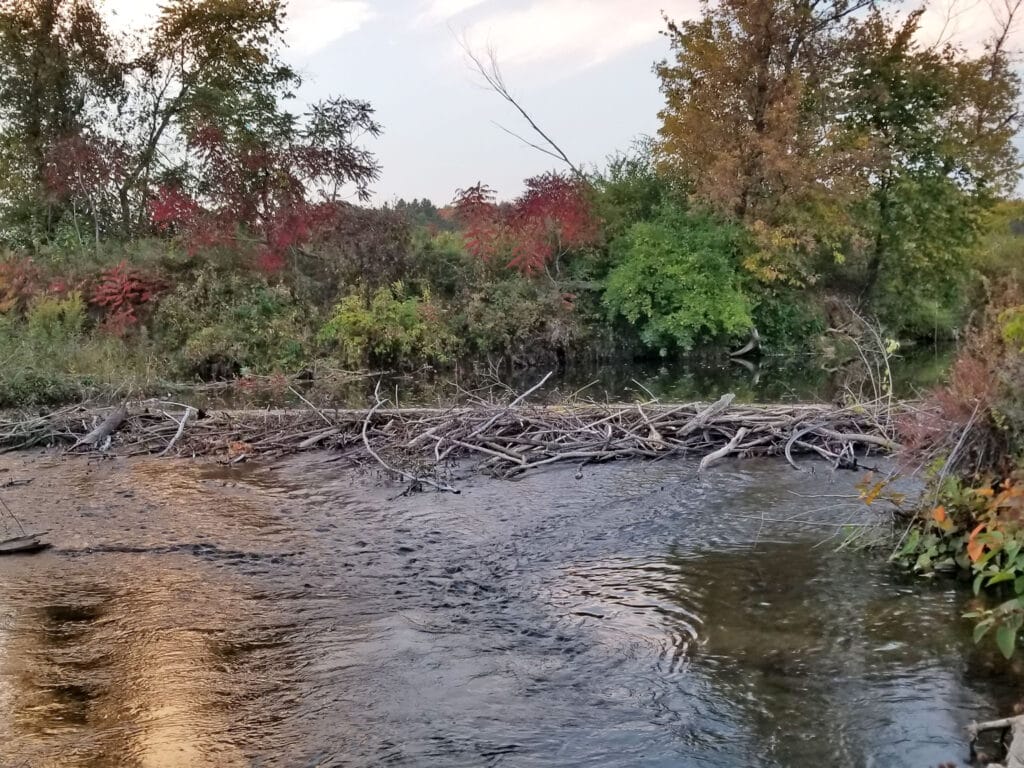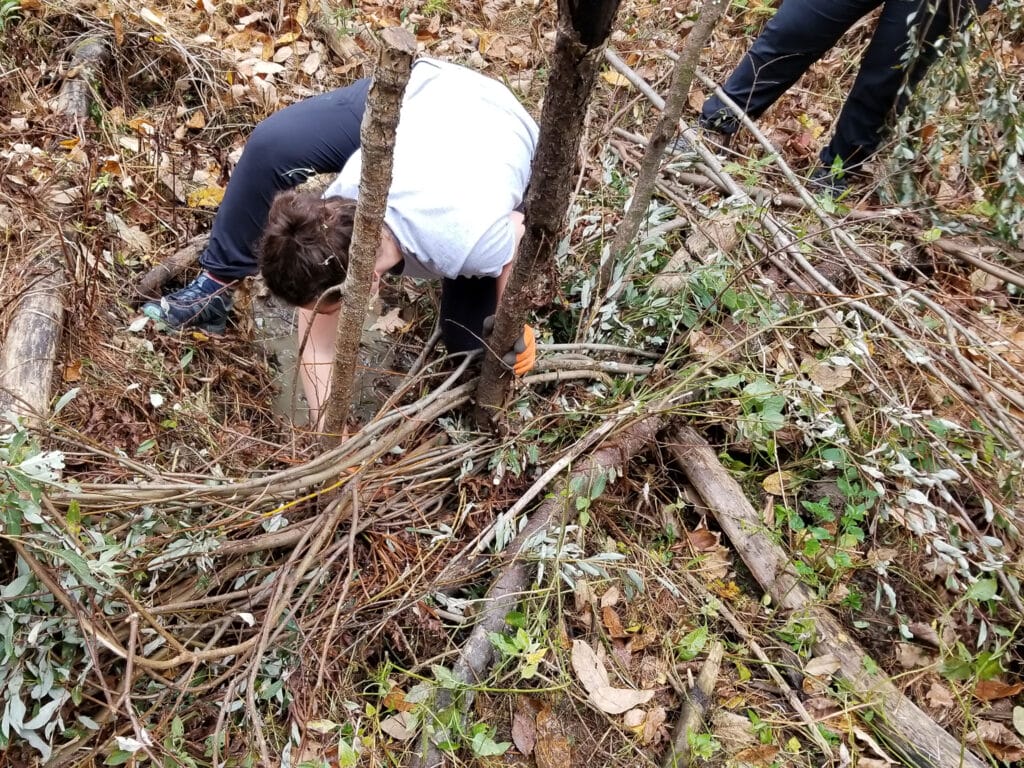Learning from beaver dams
6 min read / February 23, 2024 / By Allaire Diamond
Can't find what you're looking for? Please contact us.
6 min read / February 23, 2024 / By Allaire Diamond
For two years, I’ve been observing beaver activity at a restoration site on VLT-conserved land along the Winooski River. Each fall during a dry spell, beavers dam an entering tributary near the river confluence. Their dam is doomed, because any sizeable rainstorm or seasonal melt will swell the confluence area up to 10 feet above it. But watching the beavers gives me a chance to see how they work from the ground up.
The beavers selectively coppice willows from a floodplain bench upstream, taking a few stems from each plant. They drag these, as well as boxelder and poplar pieces, to the most constricted part of the floodplain: by a pile of rocks a previous landowner placed to stabilize the now-abandoned field. This site allows the beavers to tie in to the more stable feature and to build a shorter dam.
They lay larger gnawed pieces onto the sandy streambed, perpendicular to the flow, and wedge other stems around these, creating a dense conglomeration. (Sometimes beavers begin by placing rocks on the streambed, but not at this site.) They follow these large pieces with smaller wood, leaves, sedgy stems and root mats, and chunks of mud, which at this site is dense with clay deposited after the last ice age.
The dam broadens at its base, sloping gently to the streambed on its upstream side to form a wide ridge across the channel. At more established sites, beavers refine their dams over time into robust, complex structures with many layers of wood, rock, soil, and herbaceous matter. Sediment naturally builds up behind dams, providing a substrate for plants to grow.
At this marginal site, even the unstable dam is helping to create a dynamic floodplain. Willow stems in the dam remnants sprout new growth after spring flooding recedes. This new growth is starting to form a living hedge, and inches of sediment – mobilized by floodwaters – have accumulated behind it.
I’ve also seen pieces of the dam that washed downstream become lodged in the bank; these are now sprouting new growth that anchors soil, traps flood debris, and forms a new storehouse of food and building material for future beavers.

We’re learning from beavers at multiple spatial scales. Examining individual dams will help us understand the materials and techniques to build higher-quality BDAs. Observing how multiple dams are situated in a complex can help us to design more comprehensive restoration projects with sets of these structures.
If they have the space, beavers usually build a series of dams on a reach of stream, complementing these with shallow canals that connect adjacent dams and extend to the valley edge. The canals, perfectly beaver-sized, allow the animals to access wood farther from the stream and to carry it through water, as they are awkward movers on land.
On another piece of VLT-conserved land in Charlotte, beavers have been transforming the valley around a small stream into a diverse wetland complex for years. At least 10 dams of varying sizes occupy the roughly 1,800-foot-long stream reach.
These have shifted over the years in relation to each other: as one dam impounded water, flow patterns changed, and beavers responded by building additional structures upstream, downstream, or in newly emergent flows around the margins. They also extended structures farther across the valley.

Beaver dam analogs (BDAs) are simply structures built by humans to replicate key features of actual beaver dams. This technique functions along with other process-based (as opposed to form-based) restoration methods – such as strategic wood addition, engineered log jams, and live stake and fascine installation – to bring woody structure back to streams in targeted ways.
Human-designed BDAs may be used to attract beavers to a site, or they may be employed to restore or improve wetlands at sites inappropriate for beavers. These projects aim to create functional complexes of dams that will complement each other in slowing and spreading water. With careful planning and the right permits, these methods are inexpensive, easy to learn, and can be accessible for a wide range of people.
BDAs offer a relatively new approach to watershed restoration, and I’ve enjoyed implementing them as part of my work with VLT and in collaboration with other organizations.
Excerpted from the article “Building Beaver Dam Analogs to Restore Watersheds” published in Northern Woodlands magazine, Autumn 2023
Watch a recording of Leila’s Vermont talk in April 2024 about beavers and the crucial role they play in the health of our rivers, watersheds, and forests.
Watch video